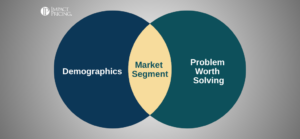You can listen to the full audio version of this blog we call — Blogcast.
Mr. Shakespeare might have said: To discount or not to discount. That is the question.
Given that binary choice, I’m a huge fan of discounting because it’s an easy way to implement price segmentation. Not everyone has the same willingness to pay, and price segmentation attempts to charge higher prices to people who are willing to pay more while still winning those with a lower willingness to pay.
HOWEVER, discounting is almost always overused. The problem arises when giving discount authority to salespeople. A good salesperson uses all available persuasive techniques to close a deal. Discounting is an easy lever to pull, and every buyer wants a lower price, so discounts are too readily given. There is no doubt that most discounting policies leads to lower selling prices and lost profits.
Pricing professionals who argue against discounts suggest implementing price segmentation in other ways. For example, there may be separate price lists for Asia, Europe, and North America. Or there may be a price list for the medical industry different from the one for consumer goods. These techniques are effective, but they still miss many differences in willingness to pay.
The best answer is a balancing act. Create a discounting policy, but temper the use of it with a sales compensation plan that incentivizes winning at higher prices. Thus, the powerful discounting lever is available but will be used less often. It’s not easy to find the balance, but it’s worth it.
How does your company implement discounting?
Share your comments on the LinkedIn post.
Now, go make an impact!
 Tags: pricing, pricing metrics, pricing skills, pricing value
Tags: pricing, pricing metrics, pricing skills, pricing value













